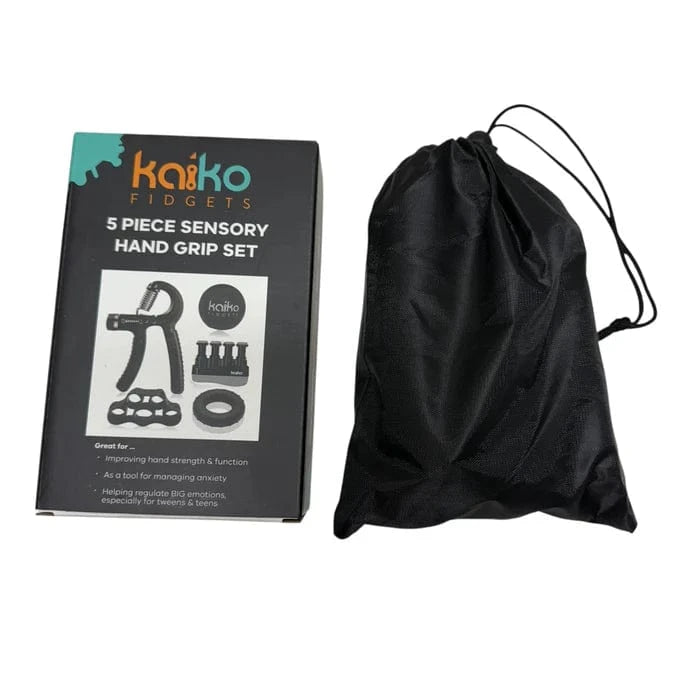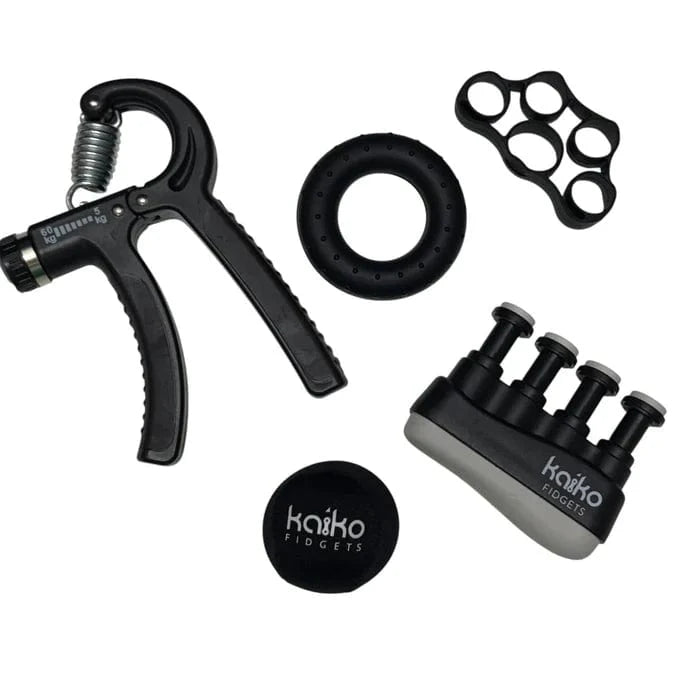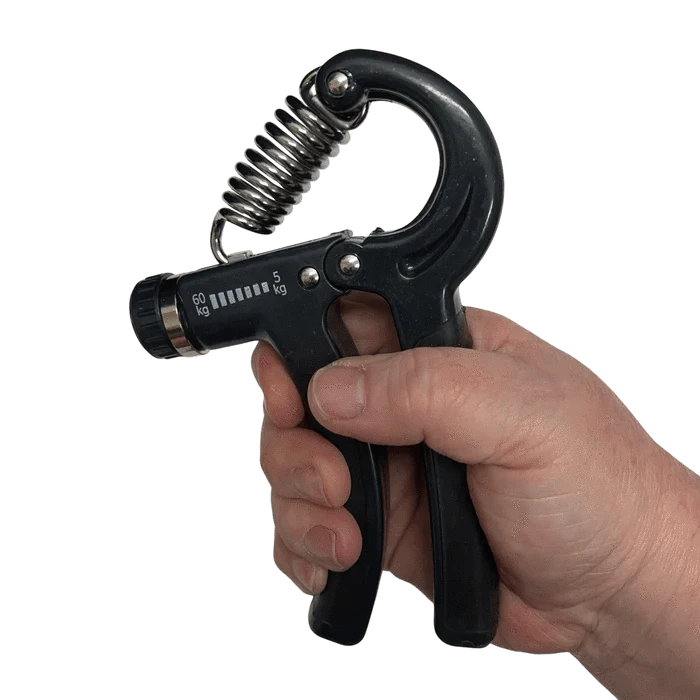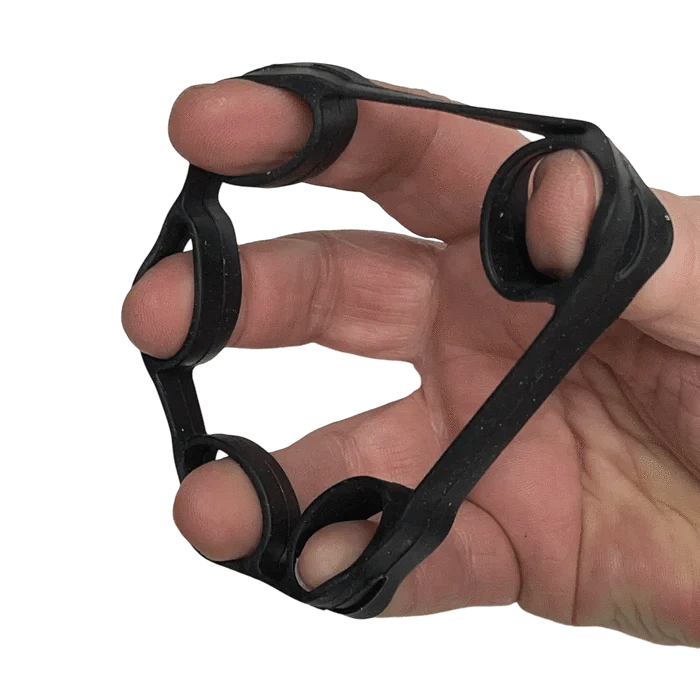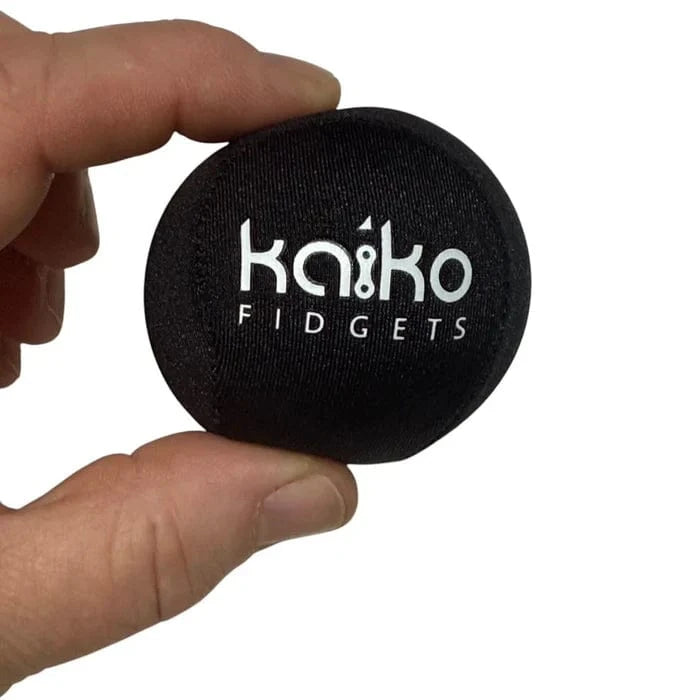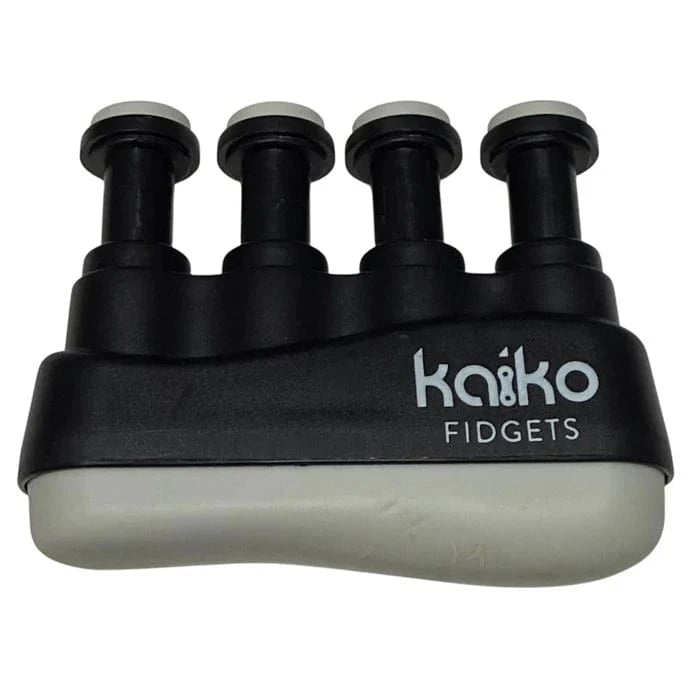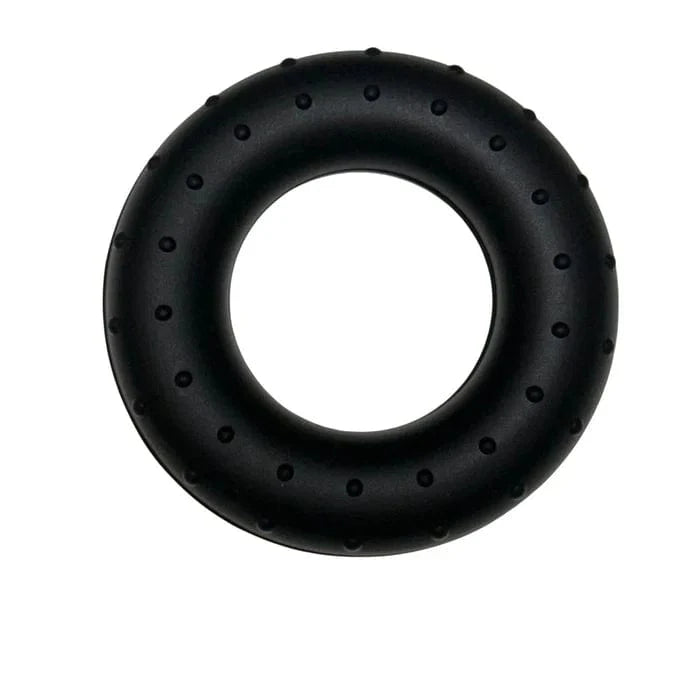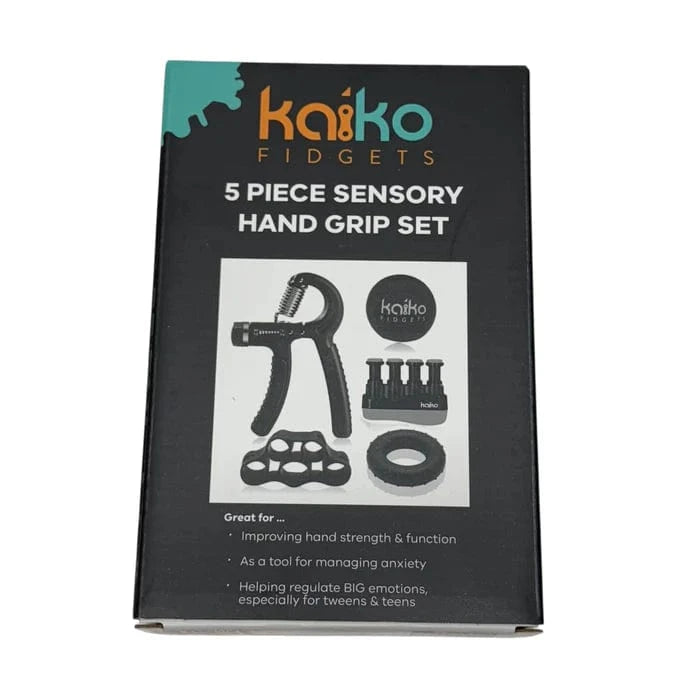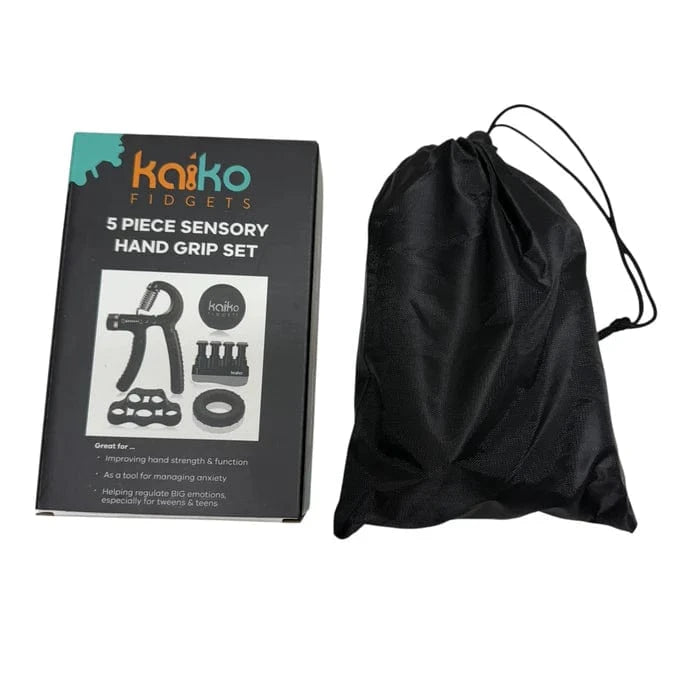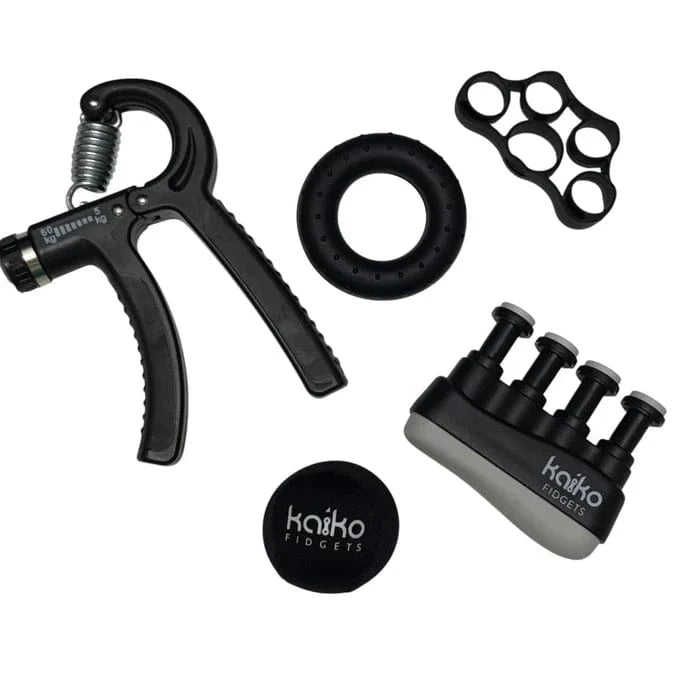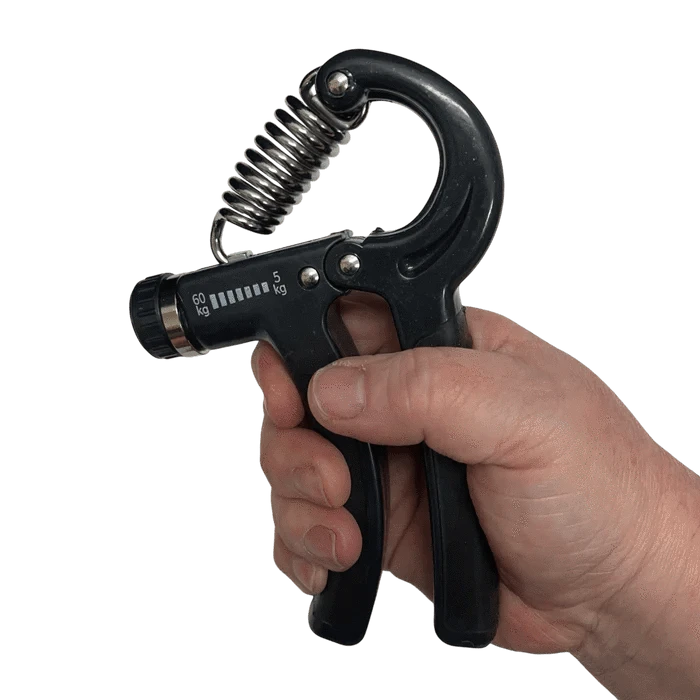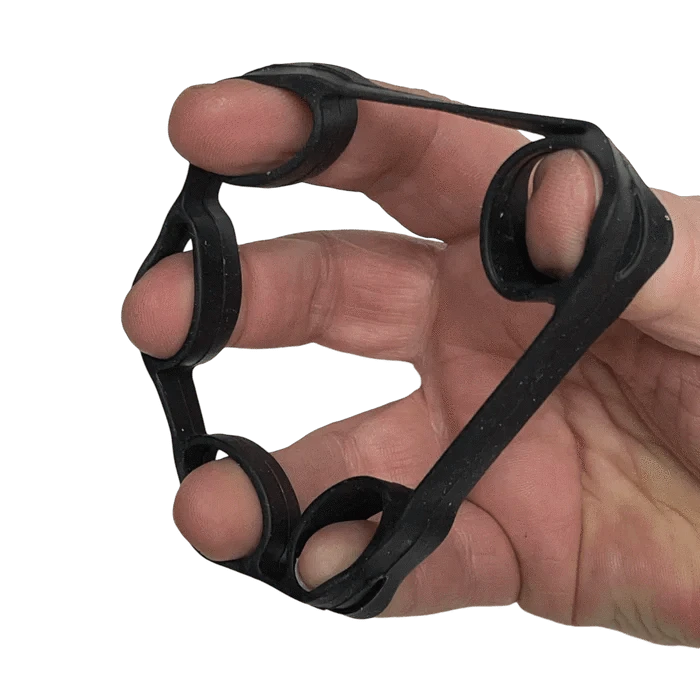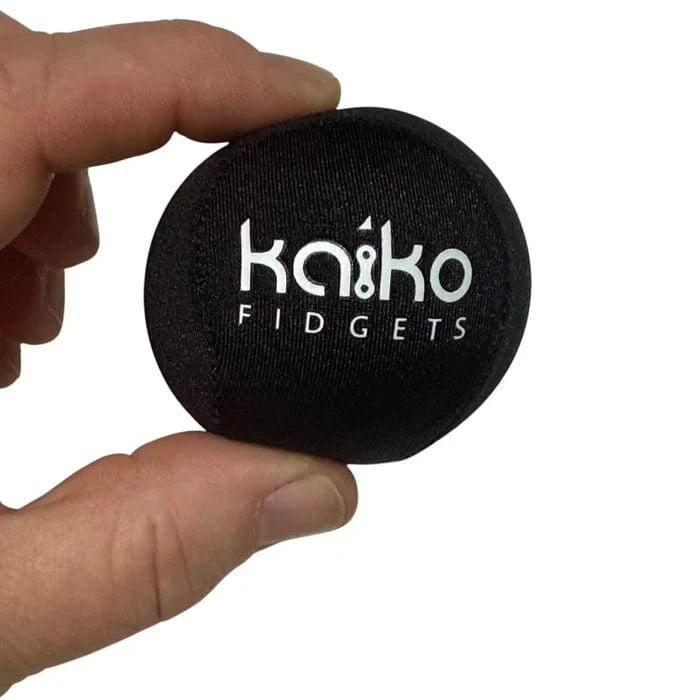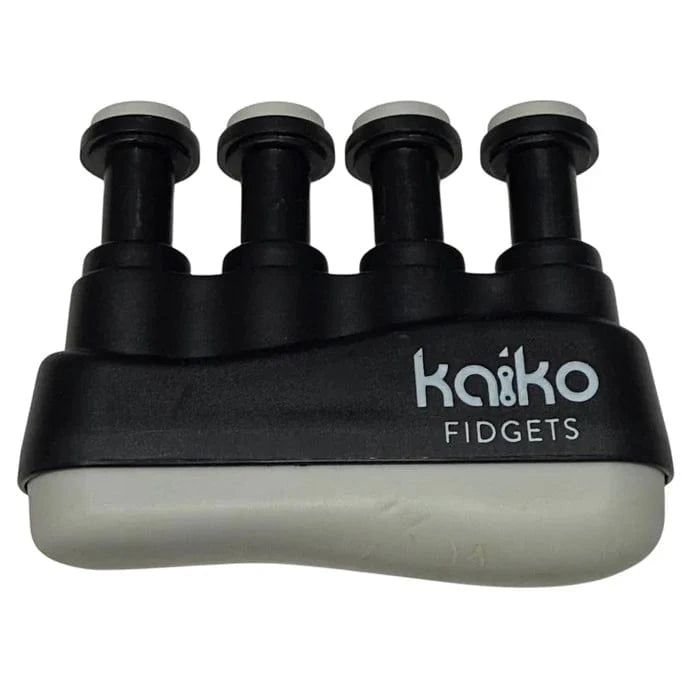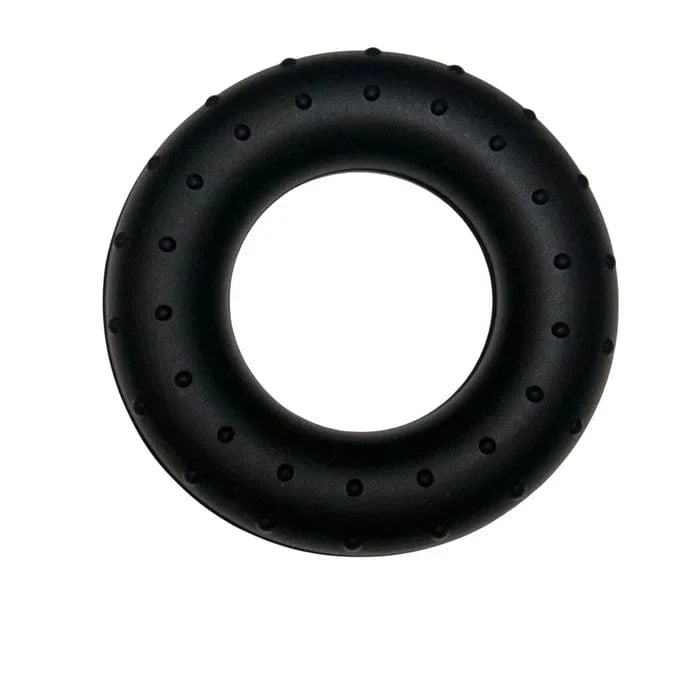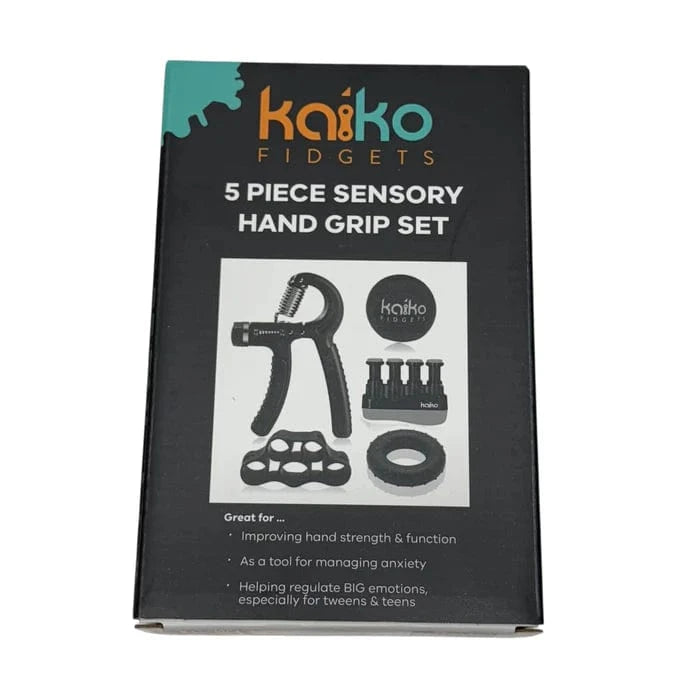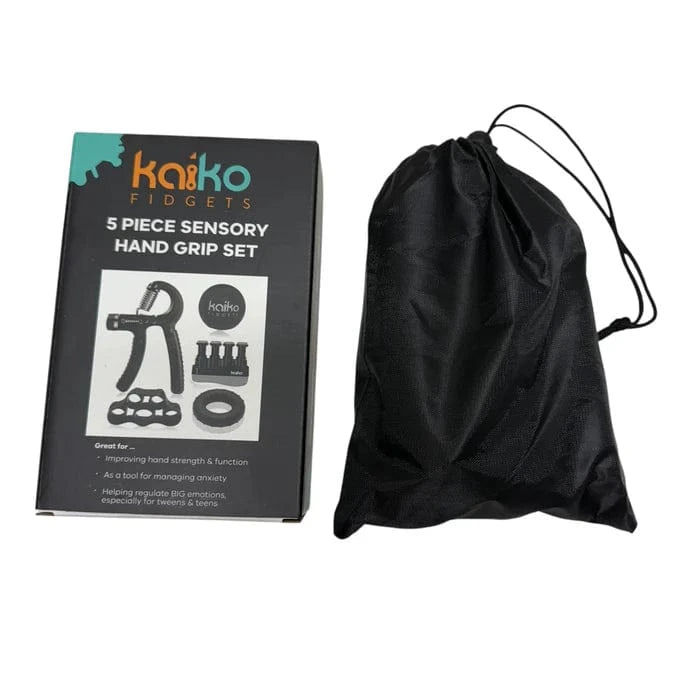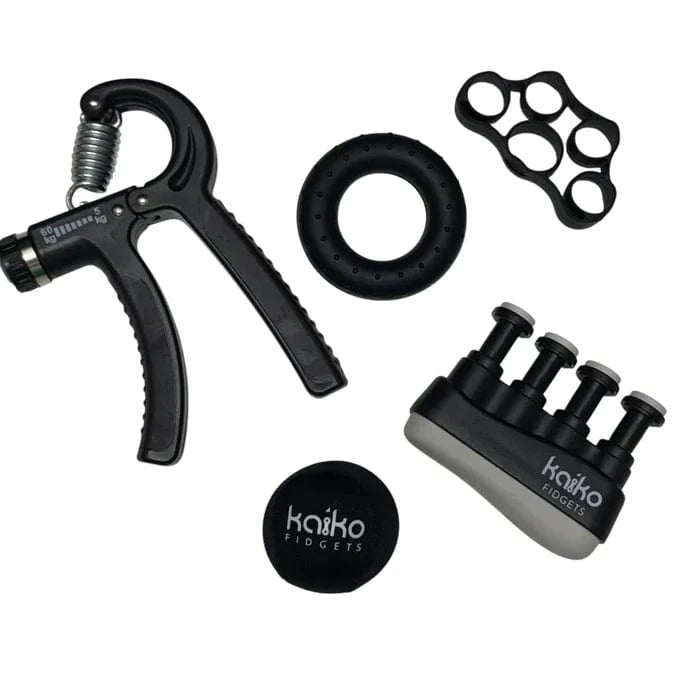Warning:
Choking hazard. Small parts.Keep your hands active and your mind engaged with the 5-Piece Hand Grip Set. Perfect for kids, teens, and adults, this versatile kit is designed to provide fun and satisfying hand activities wherever you are.
What’s Included?
- Adjustable Grip - turn the end dial to change the tension on squish. Excellent for strengthening hand function and BIG feelings.
- Stretch finger grip - stretch resistance/finger extension.
- Grip ring with texture for picking support, strengthening, & regulation
- Kaiko fabric black small Extreme Squishy - Hand washable, robust squishy
- Finger & Hand exerciser - great for fine motor, fidgety fingers and resistance
Why You’ll Love It:
- Perfect for staying active and engaged during work, school, or play.
- Encourages fun and focus in busy moments.
- Portable and durable for use anywhere, at home or on the go.
The 5-Piece Hand Grip Set is your go-to for keeping hands busy, building strength, and having fun!
Not suitable for children under 8 years. Adult supervision recommended.
Kaiko Fidget sensory tools can assist with...
- Supporting mental health & reducing anxiety
- Emotional regulation & sensory input
- Focus & concentration - great study or work tool
- Tactile awareness & desensitisation
- Hand function – improving fine motor, strength & circulation
- Managing stress
- Active listening - can increase focus & attention
- Reducing unhelpful habits - such as nail biting, smoking, tapping, hair twirling, pen clicking & leg bouncing etc.
- Sensory seeking substitution - finding a more socially acceptable outlet for sensory preferences
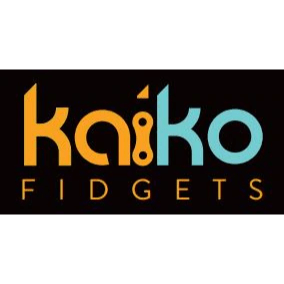
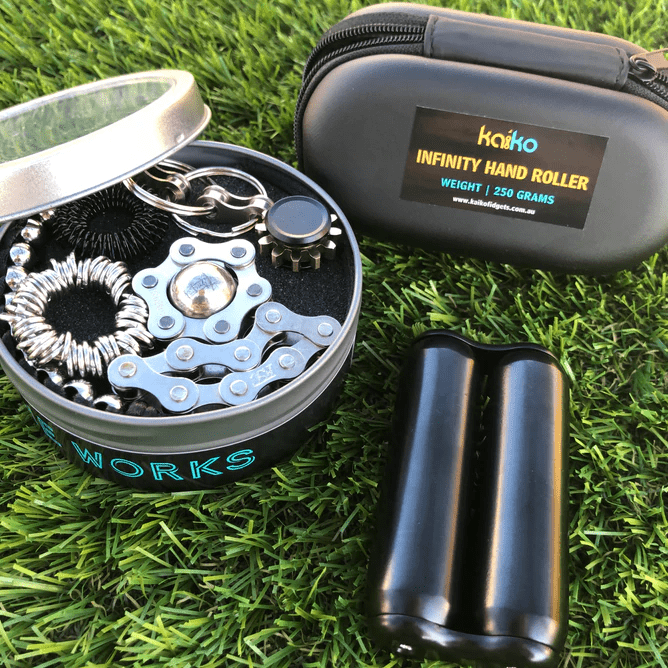
Try Kaiko Fidgets
While it is a family business, the dedication to achieving top quality products is present within Kaiko. The company strives to show attention to detail, and they have a strict quality control process. Since 2017, Kaiko has become one of the most recognised Australian fidget brands. The company continues to grow, and Sensory Assist is proud to showcase its products as a part of our selection.
If you’re looking for Kaiko Fidgets, check our selection today. We offer toys and tools that help children with different special needs.
Kaiko Fidgets began in 2017 when the creator, Kai, saw a lack of fidget styles and designs in the Australian market. He needed them for himself, as he struggled with dyslexia and autism. By the age of 11, he started to make designs with the help of his mother. One of his first designs was a metal fidget, which quickly became popular in his area.
The family began Kaiko Fidgets after seeing a business opportunity. Its name is a combination of Kai and his younger brother, Kobi, and the company showcases the siblings’ favourite colours within the brand. With the help of their parents, they have been able to develop different types of fidgets and toys to help special needs children.
With a careful selection of products and materials, each product can assist with a person’s daily life. For example, some tools are for harm minimisation, while others give a soft and soothing feeling. Other products are similar to the fidgets, providing rhythmic stimming, which helps against anxiety. The goal is to provide support to a wide range of needs.
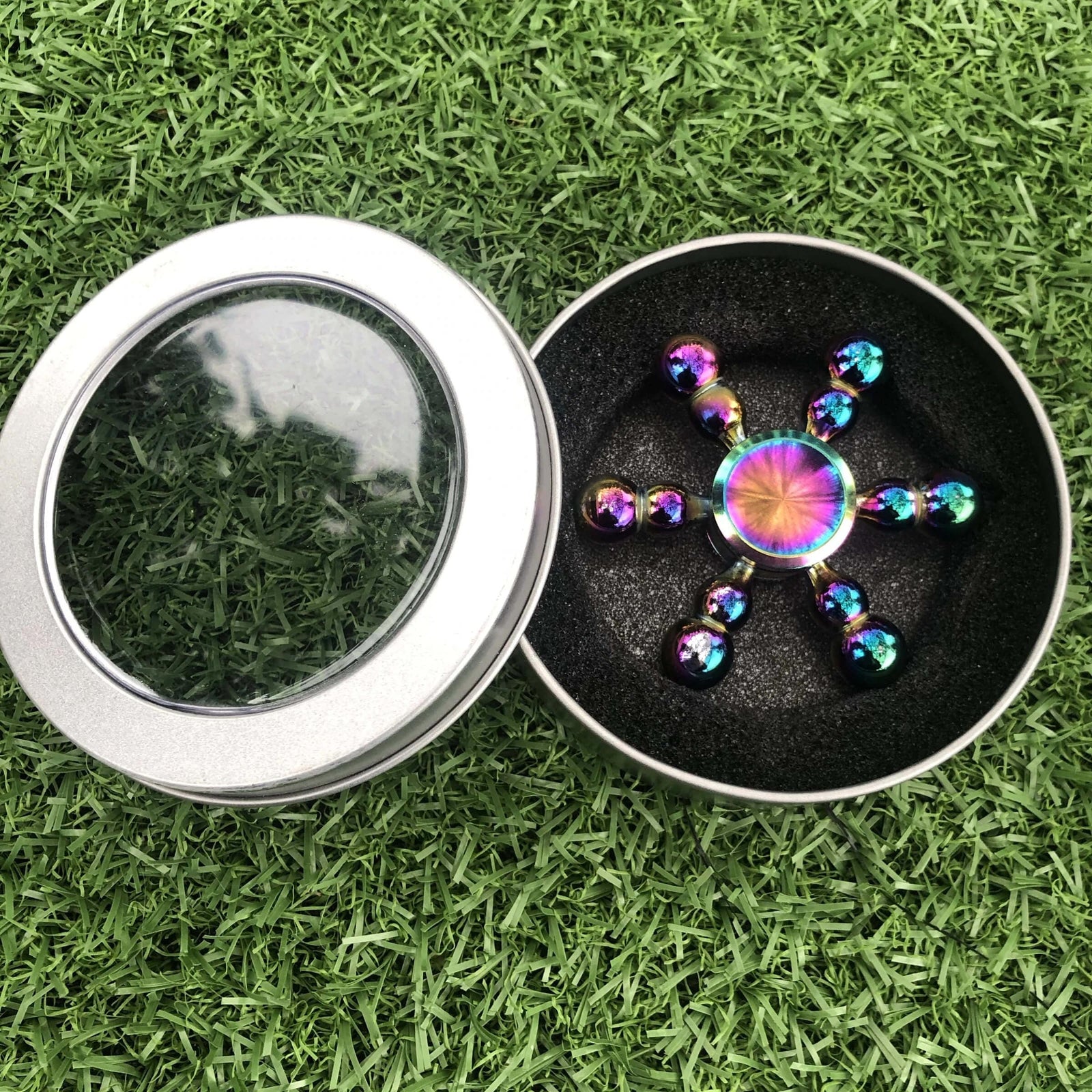
FAQs
Keeping the fidgets sanitised.
They are fine to wipe , the trick is to wipe excess moisture off them. If left wet/damp they can rust in appearance a little but generally does not affect function. Wiping with an antibacterial wipe or damp cloth then drying off thoroughly is the key.
To shorten necklace:
Simply cut and retie knot at each end to the desired length & pull knot back into the casing of the clasp. We find the easiest way to find optimum length is to have arms at right angle across belly. The bead length should be about at this height.
Kaiko Fidget sensory tools can assist with:
Supporting mental health & reducing anxiety
Emotional regulation & sensory input
Focus & concentration - great study or work tool
Tactile awareness & desensitisation
Hand function – improving fine motor, strength & circulation
Managing stress
Active listening - can increase focus & attention
Reducing unhelpful habits - such as nail biting, smoking, tapping, hair twirling, pen clicking & leg bouncing etc.
Sensory seeking substitution - finding a more socially acceptable outlet for sensory preferences




